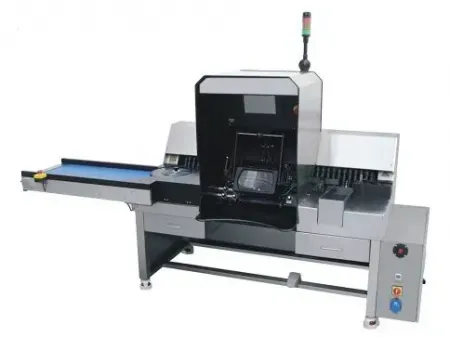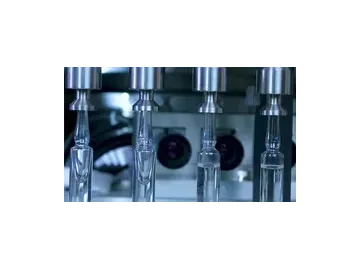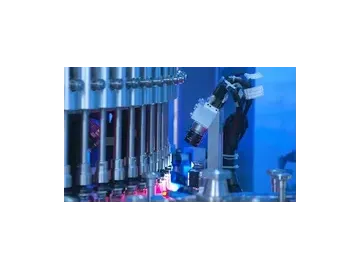Semi-Automatic Visual Inspection Machine
Automatic Visual Inspection (AVI)
| Capacity | Diameter (mm) | Height (mm) | Speed (pcs/min) |
| 5ml | 18.5 | 40 | 100 |
| 10ml | 22.5 | 45 | 100 |
| 15ml | 22.5 | 60 | 100 |
| 20ml | 29.5 | 60 | 90 |
The semi-automatic visual inspection machine is capable of inspecting ampoules, vials, IV bags, and eye drop bottles for both foreign particles and appearance defects.
- The semi-automatic visual inspection machine supports both continuous and intermittent transport modes.
- In intermittent mode, up to 7 bottles can be processed per cycle, with adjustable bottle count and interval time; the continuous mode also features adjustable transport speed.
- Inspection is conducted at an optimal viewing angle of approximately 60 degrees for accurate defect identification.
- Products move through a continuous autorotation system with stepless speed adjustment, allowing operators to observe all sides of each container.
- A 2x magnifying lens is positioned in the inspection area to assist with detailed observation of the bottle tip, shoulder, body, bottom, and liquid content.
- A foot-pedal brake allows the operator to stop rotation instantly for further inspection of suspicious or defective items, enabling repeat viewing and accurate rejection.
- Defective products are eliminated automatically following manual inspection and operator command.
What are the key features of the semi-automatic visual inspection machine?
The semi-automatic visual inspection machine supports both continuous and intermittent transport modes. Bottle count per cycle, interval duration, and continuous speed are all adjustable. Inspected containers rotate continuously with stepless speed control, allowing thorough observation at a 60° angle. A 2x magnifying lens aids detailed inspection, and defective items are rejected automatically based on manual operator commands.
What types of containers and defects can the semi-automatic ampoule inspection machine handle?
It is suitable for vials, ampoules, eye drop bottles, and PFS syringes. Defect detection includes all visually identifiable foreign particles (e.g., glass shards, fibers, white spots) and appearance defects.
How does the semi-automatic ampoule inspection machine reject defective products?
The operator initiates rejection through manual inspection. Once a defect is confirmed, the system automatically removes the defective product from the line.
Does the visual inspection system include a magnifying lens or optical enhancement features?
Yes, the semi-automatic visual inspection machine is equipped with a 2x magnifying lens, allowing reflective observation of critical areas such as the bottle tip, shoulder, body, bottom, and the liquid contents.




